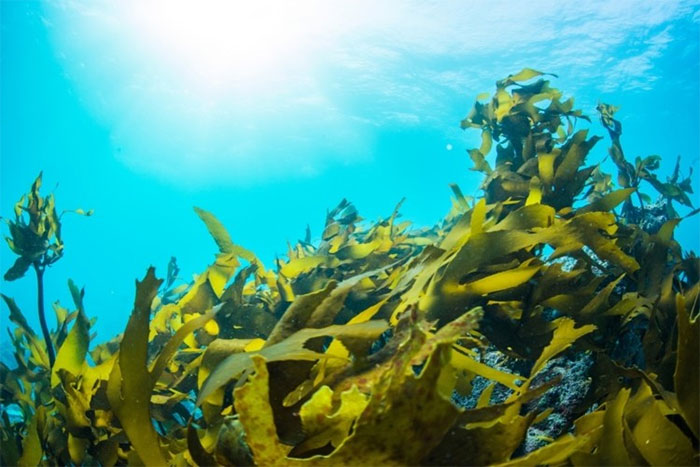Israel develops method of harvesting electric current from seaweed
The researchers used the seaweed species Ulva, commonly known as sea lettuce, as a new photosynthetic source for electric current, which generates molecules that transfer electrons to an electrode.
Israeli researchers have developed an efficient and environmentally friendly new method of direct current harvesting from seaweed.

In the dark, the seaweed produced an electric current half of that obtained in the light.
This is a method jointly developed by researchers from the Technion Institute of Technology and the Institute of Oceanography and Geology (IOLR).
According to information published on December 28 in the journal Biosensors and Bioelectronics, researchers have used the species of seaweed Ulva, commonly known as sea lettuce, as a new source of photosynthesis for an electric current, creating molecules that transfer electrons to an electrode.
The technique generates an electric current 1,000 times greater than that produced by cyanobacteria, on par with that obtained with standard solar collector technology.
The new method does not use any chemicals and is considered an environmentally friendly method because seaweed does not emit carbon during the day, and even during growth, the plant has the function of absorbing carbon from atmosphere and release oxygen.
The researchers then built a prototype device that directly collects electricity from the grown Ulva seaweed.
Previously, researchers had developed technology to capture electricity and fuel hydrogen from cyanobacteria, also known as blue-green algae.
However, the minus point of this method is that the amount of current obtained from cyanobacteria is reduced in the dark because of the absence of photosynthesis.
- BMW develops new DC charging technology, which recharges power in minutes
- The person emitted an electric flame
- Super interesting facts about seaweed
- Video: The power to instantly paralyze the brain of electric guns
- Japan can extract Bio-ethanol from seaweed
- Students make an electric car that runs 900km on a single charge
- Airbus researches electric planes
- Why do you get jerky when you touch objects in the winter?
- Indonesia develops coffee grounds into electric vehicle battery materials
- Planting seaweed into a forest under the ocean can combat climate change
- Electrophysiological stimulation enhances the ability to learn
- Planting seaweed in Truong Sa
 Why do potatoes have eyes?
Why do potatoes have eyes? 'Tragedy' the world's largest carnivorous life: Death becomes ... public toilet
'Tragedy' the world's largest carnivorous life: Death becomes ... public toilet Tomatoes were once considered 'poisonous' for 200 years
Tomatoes were once considered 'poisonous' for 200 years Detecting microscopic parasites on human face
Detecting microscopic parasites on human face Caribbean scientists turn harmful seaweed into car fuel
Caribbean scientists turn harmful seaweed into car fuel  American doctor reveals 2 types of vegetables that can activate longevity genes, 'improve aging', help lower blood sugar, and lose weight
American doctor reveals 2 types of vegetables that can activate longevity genes, 'improve aging', help lower blood sugar, and lose weight  In the future, we can eat seaweed instead of animal meat
In the future, we can eat seaweed instead of animal meat  Super durable natural material, if spread on the roof, it won't rot for 300 years
Super durable natural material, if spread on the roof, it won't rot for 300 years  Seaweed - Strange 'treasure' but especially useful in securing the future of mankind
Seaweed - Strange 'treasure' but especially useful in securing the future of mankind  Planting seaweed into a forest under the ocean can combat climate change
Planting seaweed into a forest under the ocean can combat climate change 